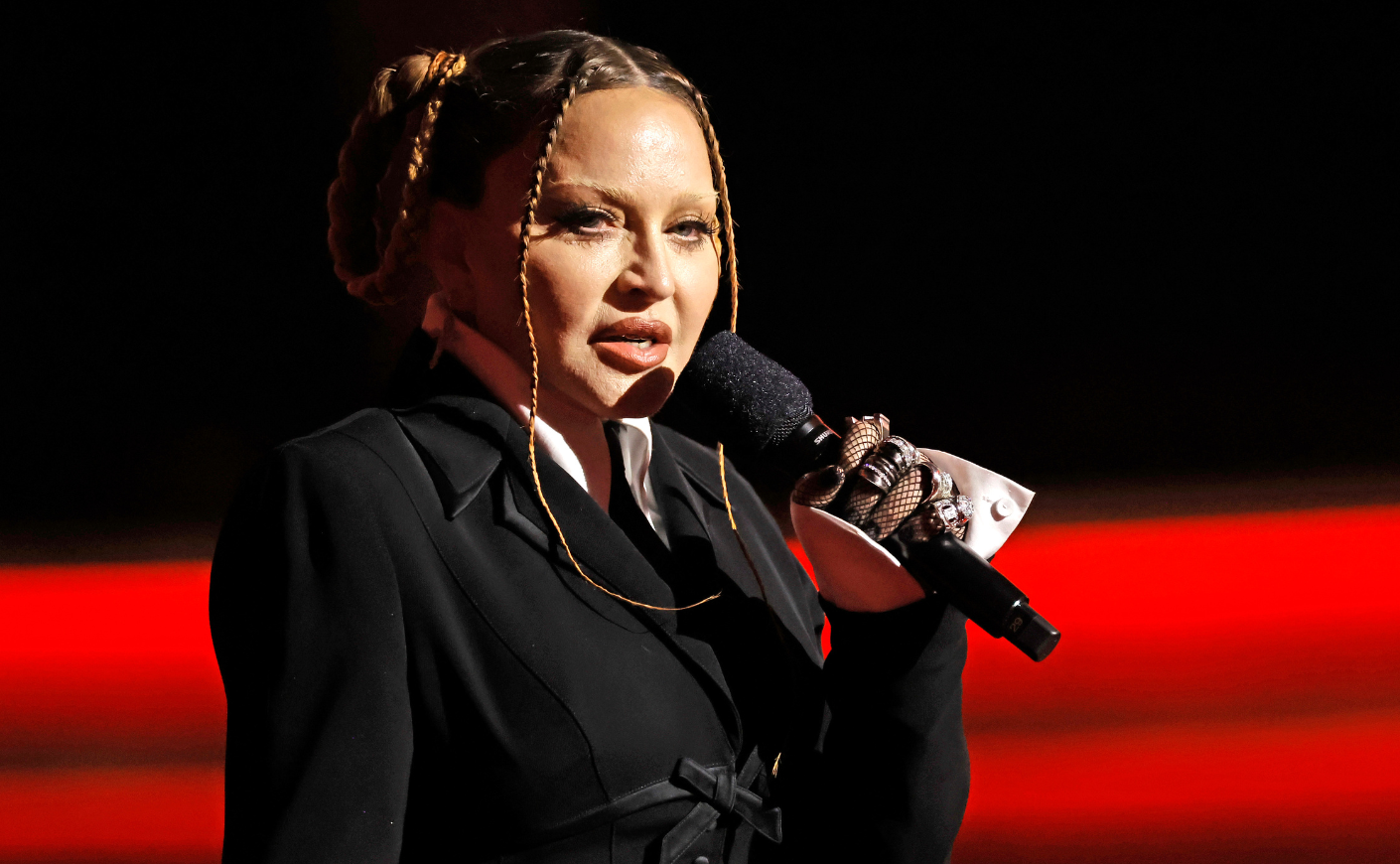No one lasts 40 years in the entertainment business without getting their fair share of criticism, and that's definitely been the case with Madonna — but she isn't taking it lying down.
The music icon was trending online this week as the Internet reacted (aggressively, in most cases) to the way she looked at the Grammy Awards, where she introduced a performance by Sam Smith and Kim Petras. Her speech honored the rebellious spirit of the music industry's "troublemakers" — something she knows a lot about — but stories like this one from the New York Post were focused on something else: "What stood out more than Madonna’s words to viewers was her face, sparking a sea of reactions on Twitter. Some couldn’t even recognize her as she stood in front of the audience with noticeably bigger lips, braids, a tight black suit and fishnet gloves."
Madonna's face is no stranger to commentary. It's been a topic of conversation for many years now, and in 2008, it even got a starring role on the cover of New York Magazine, which dubbed it "The New New Face." So while the discussion is nothing new, it did catch the attention of the subject of all this debate, as proven by a bold statement she made on Instagram on Tuesday.
Lamenting the fact that people focused on "close-up photos of me taken with a long lens camera ... that would distort anyone’s face" rather than the content of her speech, Madonna connected this latest outcry to what she's experienced since her career began in the 1980s.
"Once again, I am caught in the glare of ageism and misogyny that permeates the world we live in," she wrote. "A world that refuses to celebrate women past the age of 45 and feels the need to punish her If she continues to be strong-willed, hardworking, and adventurous."
Of course, it must be said all signs point to the fact that Madonna has had plenty of work done. She's never admitted that publicly, but it's clear to anyone with eyes and a pulse that her smooth, plump, line-free face is simply not natural at 64 years old. Whether she's gone overboard, as many media outlets said this week, is a matter of personal opinion — and it's something longtime Madonna fans like myself must contend with as we celebrate her — but what can't be disputed is the press's history of denigrating her for getting older.
In fact, it dates as far back as the 1990s, when magazines ran photos of her next to headlines like "Calm Down, Grandma!" when she was all of — *checks notes* — 35 years old.
Controversial behavior has been a cornerstone of Madonna's persona since she became famous, but the public reaction to it has certainly soured as she's aged. She pointed this out herself during a 2016 speech in which she outlined the "rules" women in the spotlight are expected to follow.
“Be what men want you to be. But more importantly, be what women feel comfortable with you being around other men. And finally, do not age, because to age is a sin," she said. "You will be criticized, you will be vilified, and you will definitely not be played on the radio.”
This line of thinking opens up a complicated conversation: Is Madonna actually "aging" if she works overtime to ensure her face still looks like she's in her 30s? Does her commitment to presenting herself on her own terms represent the freedom everyone deserves, or has she fallen victim to the ageist system she rails against?
Perhaps those questions are the point, as a New York Times essay argued this week. Written by author Jennifer Weiner (who has also opined about body image for Katie Couric Media), the piece calls Madonna's face a "brilliant provocation."
"I’d like to think that our era’s greatest chameleon, a woman who has always been intentional about her reinvention, was doing something slyer, more subversive, by serving us both a new — if not necessarily improved — face and a side of critique about the work of beauty, the inevitability of aging, and the impossible bind in which older female celebrities find themselves," Weiner writes.
It's no secret that facelifts and Botox (and, more recently, Ozempic and buccal fat removal) play a substantial role in the way famous people present themselves. But in Madonna's case, her obsession with youth and fitness has become a fundamental part of her public narrative, so her face work takes center stage. But it also draws attention to a conversation that's become increasingly central in our society: "If beauty is a construct," Weiner's piece concludes, "Madonna’s the one who put its scaffolding on display."
Her choices make many people uncomfortable, and it's their right to feel the way they do as much as it's her right to look the way she does. But it's also safe to assume younger stars will be judged less harshly over cosmetic procedures by the time they get to be Madonna's age. Her behavior has demonstrably changed the conversation around women in the media, as evidenced by the fact that the same society that once called Madonna a "grandma" for dressing sexy at 35 now praises celebrities like Jennifer Lopez for "looking stunning in a stylish swimsuit" at 53. These improvements are a good thing: J.Lo does look drop-dead gorgeous at 53, and everyone is better off for acknowledging that people can, should, and do feel beautiful at any age.
"I have been degraded by the media since the beginning of my career, but I understand that this is all a test, and I am happy to do the trailblazing so that all the women behind me can have an easier time in the years to come," Madonna wrote on Instagram this week. "I look forward to many more years of subversive behavior — pushing boundaries, standing up to the patriarchy, and most of all, enjoying my life."









